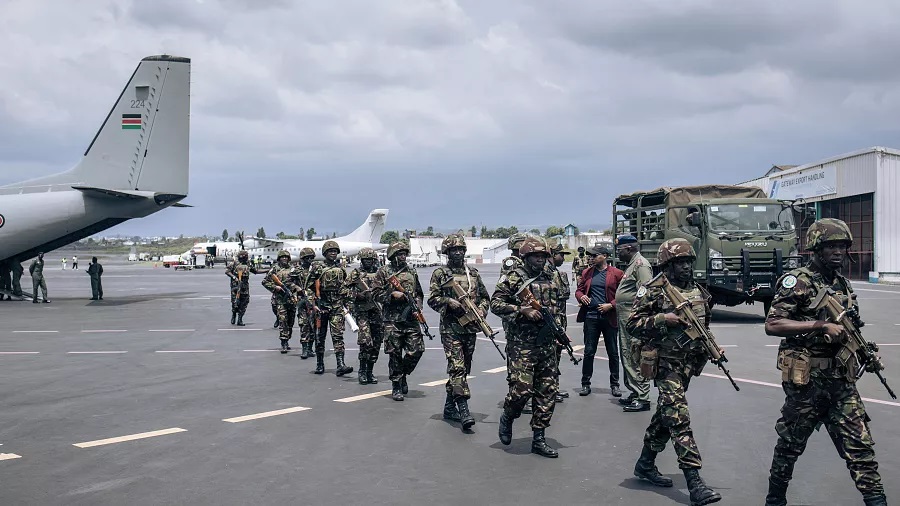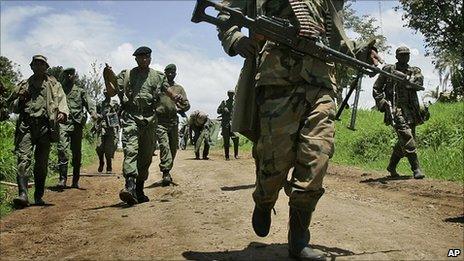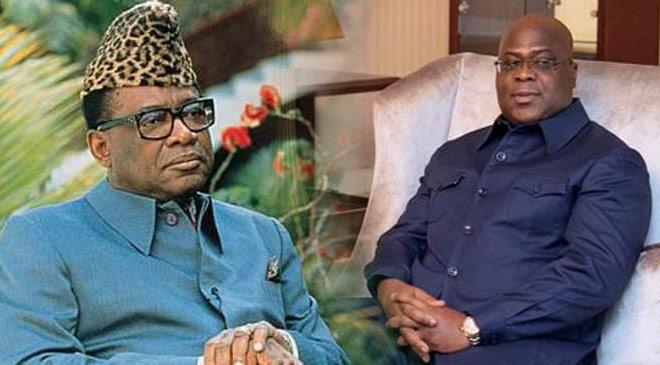Regional
How Kenya is getting dragged into DRC’s contradictions

As
the Democratic Republic of Congo (DRC) continues to struggle with insecurity in
its eastern part, Kenya’s second batch of troops arrived in Goma, North Kivu, on
November 16. Kenya’s troops are part of the East African Community (EAC)
regional force initiative.
The
recent flare up of violence is a result of intense fighting between the Congolese
army, and the M23 rebels, where the latter recently seized swathes of territory
in North Kivu Province.
A
day after the arrival of the Kenyan troops, the EAC facilitator and former
Kenyan President, Uhuru Kenyatta, arrived in Kinshasa, then later traveled to
Goma, in a bid to find a solution to the insecurity problem.
With
the deployment of the Kenyan troops, and the visit of the former Kenyan
president, it’s clear that the Kenyan government and the East Africa region at
large are truly invested in bringing back peace to the eastern part of DRC. The developments brought quiet a number of
contradictions from both Kinshasa and Nairobi.
For
starters, while flagging off the first batch troops, on November 2, Kenya’s
President William Ruto said that their main mission was to protect humanity, an
engagement that was re-emphasized by the Force Commander for the East African
Community Regional Force (EACRF), Maj Gen Jeff Nyagah, once the troops landed
in Goma.
Maj
Gen Nyagah said that war does not necessarily mean peace, but diplomacy must be
pursued first, and a military solution comes last when everything else fails.
He further declared that the Kenyan troops’ mission is the disarmament and
demobilization of over 130 armed groups who have instigated a significant
degree of insecurity, and not only targeting the M23 rebels.
But
on a contradictory note, right before he made these remarks, the Congolese
Deputy Chief of Staff in charge of Operations, Maj Gen Chiko Tshintambwe, said
that their main priority is to bring peace in the country and fight the M23
rebels and the Rwandan aggression.
According
to the Nairobi process roadmap, the regional force’s
mandate is to deal with foreign armed groups and other local armed groups who
would refuse to join the political dialogue. The problem is that now the EAC is
being diverted from its original mandate as per the Nairobi process and is
being portrayed by DRC as a bilateral force.
But the Congolese government views the
deployment as a reinforcement to FARDC fight the M23 rebels, whom they have
branded as terrorists.
On
top of this gaffe, Kenyan diplomats also joined the contradictions, by making
statements advancing DRC’s narrative about the conflict in E-DRC. Kinshasa is
known for regional and international manipulations, making people believe that
Rwanda is backing the M23 rebels.
The
most recent accusation came in a statement issued by the Consulate of the
Republic of Kenya in DRC, which highlighted that during his visit, Uhuru, observed
that the terms of the Nairobi conclaves which had been agreed upon, of all the
fighting forces to remain in their fighting positions, had not been honoured by
the rebel groups and ‘their backers’.
Worse
still, the Kenyan former Foreign Affairs Permanent Secretary, Ambassador Macharia
Kamau, appeared to be of the same view. He tweeted that “a human catastrophe is
unfolding in Goma, and hundreds and thousands are fleeing the killing machine
that is M23, and its backers.”
Seeing
top Kenyan diplomats advancing these baseless accusations amid the ongoing
crisis, one wonders if they are being manipulated by Congolese leaders.
Have
they contracted the anti-M23 disease that is recurring in DRC, or are they under
the influence of a higher power in Kinshasa?
These
diplomats are diverting the initial agenda of the bloc’s peace efforts, and
espousing the narrative with the Congolese government in their scapegoating and
blaming supposed foreign backers for their entire domestic and insecurity issues,
which have been ravaging the eastern part of the country for nearly three
decades. Such a narrative reinforces the DRC’s lie that it is fighting Rwanda,
not M23, hence relieving Kinshasa from ownership in addressing its internal
problems.
The
issue of discrimination and stigmatization of Kinyarwanda speaking Congolese,
deliberately labeled as foreigners, and refugees who are denied right to return
home is being ignored, yet it is at the heart of the current conflict between
DRC and M23.




.jpg-20221116095818000000.jpg)

.jpg-20221113062657000000.jpg)